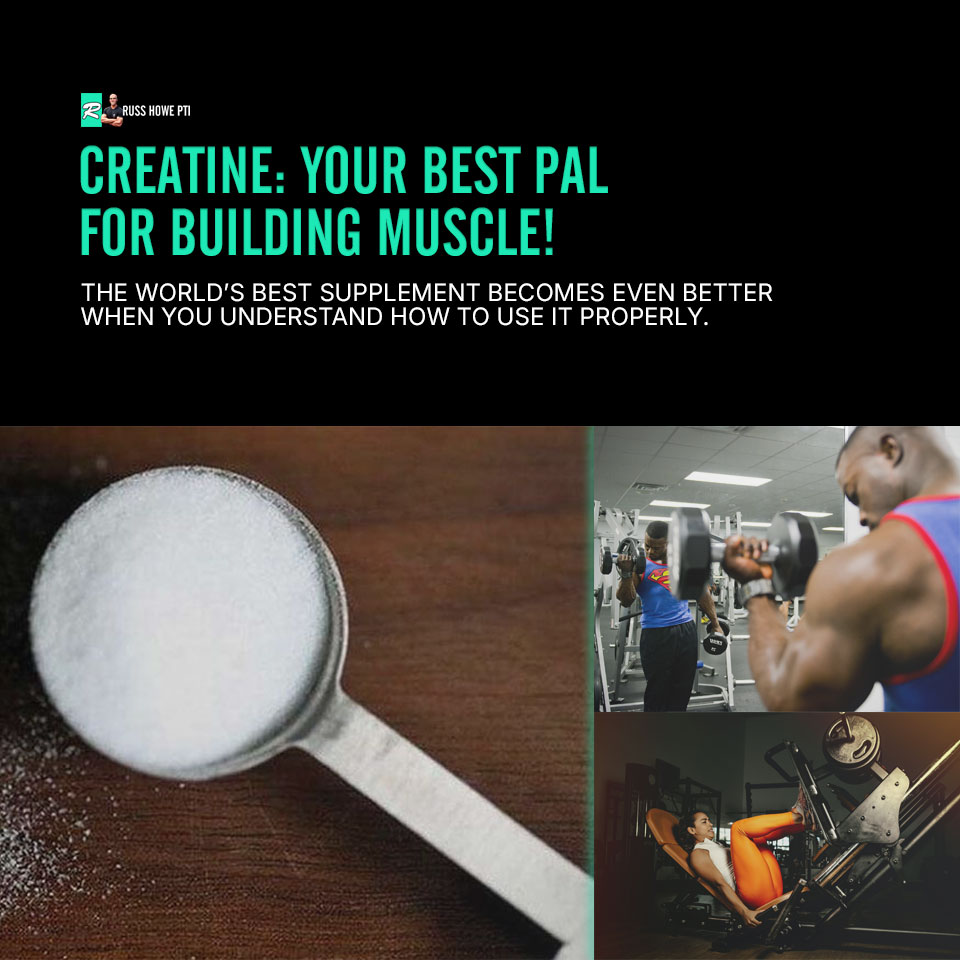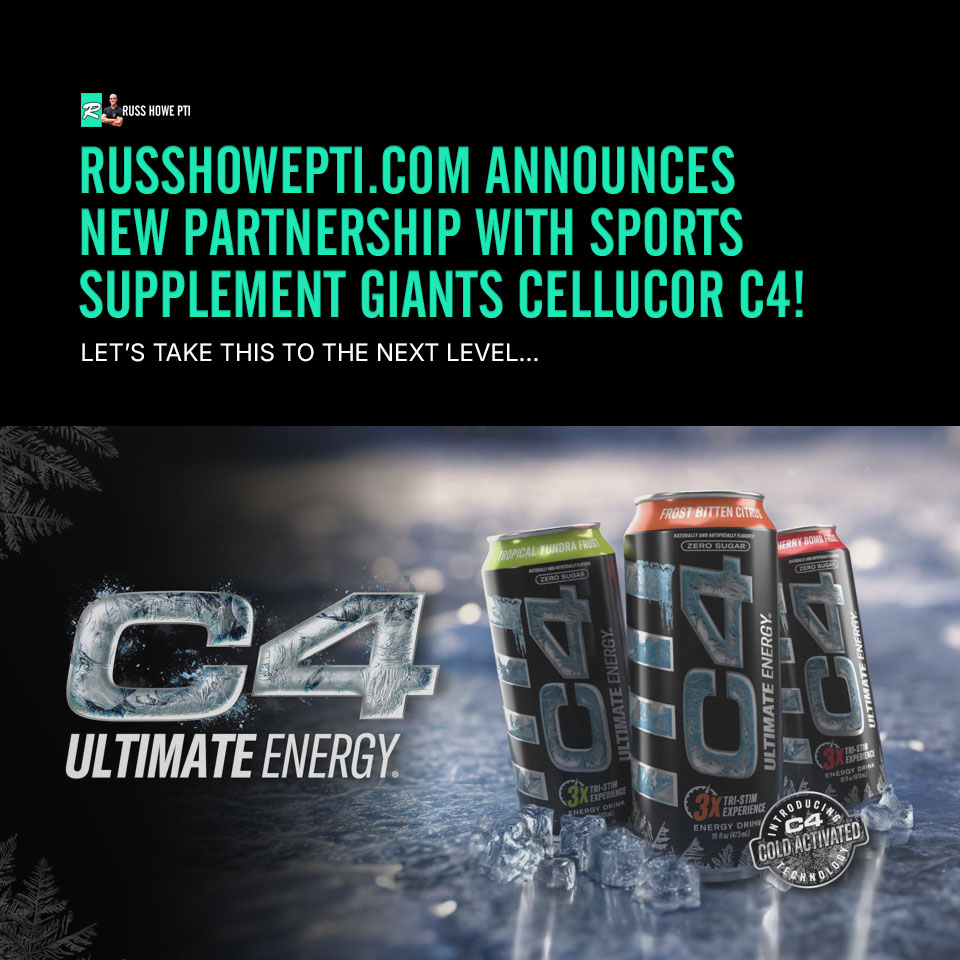Creatine is a supplement which I believe everybody should use.
That includes people who are looking to gain muscle, or get stronger, or just generally have a better quality of life.
There’s so many benefits to it, but there’s also a lot of confusion and concern out there about potential negative effects (Is it safe? Is it like steroids? Is there a maximum dose you can take?), so in this comprehensive article I’m going to be breaking down everything you’ve ever wanted to know about the world’s best-selling bodybuilding supplement: creatine!

What Is Creatine?
Creatine is a combination of three amino acids:
- Arginine
- Glyine
- Metionine
Yep, despite all the hype on the packaging which confuses people into believing that it’s some kind of exotic substance or an anabolic steroid, it’s really just a naturally occurring compound which you’re already getting (at least in small amounts) via the protein in your daily diet!
There’s 22 amino acids found in protein and they handle a range of different responsibilities which include better skin, increased energy, muscle repair, etc.
The three we’re focusing on here (arginine, glycine, and methionine) make up creatine.
See below:
| Arginine | Asparagine | Aspartic Acid | Beta-alanine |
| Cysteine | Glutamine | Glutamic Acid | Glycine |
| Histidine | Isoleucine | Leucine | Lysine |
| Methionine | Phenylalanine | Proline | Serine |
| Threonine | Tryptophan | Tyrosine | Valine |

Why Should We Use It?
Creatine works by enhancing the body’s ATP-PC energy system.
This is one of the body’s three main energy systems, which it taps into depending upon what type of activity is occurring:
- ATP-PC
- Glycolytic
- Oxidative
This particular energy system is used for short bursts of intense exercise typically lasting 10-60 seconds, so think springing, lifting weights, etc.
It’s powered by something called creatine phosphate, which is like rocket fuel for your muscle cells. Unfortunately the body has very limited reserves of this stuff (example; have you ever noticed how hard it is to sprint flat-out for more than 60-seconds?) but the good news is it recovers and replenishes quite fast, with almost 85% of your creatine phosphate reserves replaced in just three minutes of rest.
Now, when we “top up” our body’s supply of creatine phosphate by taking a creatine supplement we simply give it more of this so-called “rocket fuel”, thereby increasing the number of intense short bursts we can do.
Hopefully you’re beginning to see the potential benefits of using a creatine supplement from a gym-based perspective, yes?

How Much More Muscle Can You Build?
Here’s the fun part.
When your body has a higher capacity for intense exercise this inevitably leads to both better performance and superior muscle building results.
Also, aside from those benefits, creatine also forces additional water into your muscle cells to give them a fuller, harder appearance. This is why new users tend to see a 5-10lb weight gain in the first month (don’t worry, it’s water not fat!) and the superior hydration of your muscle cells will help you look fucking awesome! (15, 16)
NOTE: Because creatine pushes more water into your muscle cells, it’s important to remember to drink plenty of water each day so you don’t feel dehydrated.
A detailed meta-analysis published in the Journal of Strength and Conditioning Research, which looked at every study on creatine from the last 22 years, confirmed that trainees see (on average) an 8% improvement in overall strength and a 14% improvement in the number of reps they can do to failure, as well as seeing a 3%-45% increase to their bench press max and a 16%-45% increase to their barbell squat max. (1)
Holy flaps!
What Is The Recommended Dose?
You’ll get the best results with 5 grams per day.
If you regularly train hard (or if you weigh over 200lbs) you can increase this to 10g/day.
Our muscle cells have max threshold so there’s no need to go beyond this point at any time. Also, research shows us that it doesn’t really matter what time of day you consume it. I personally like to mix mine with my post-workout whey protein shake, but you do you. (12)

Is Creatine Dangerous?
No, it’s not dangerous, but I I can understand why people worry about this.
Heck, the first time I returned home from my local gym carrying a tub of suspicious-looking white powder that had bold claims about “an avalanche of muscle gains” my dad nearly slapped my lips clean off my face!
So let me squash your worries here; creatine is a perfectly safe supplement, with zero links to anabolic steroids. (2, 3, 4, 5)
However, there may still be side effects if you don’t use it correctly – for example, you could experience dizziness or muscle cramps as a result of not drinking enough water, or get the runs if you constantly take more than the recommended daily dose of 5-10g.
Finally, before we move on, I’m often asked by worried parents if their teenagers can use creatine.
The answer is YES.
Research from the 1990s shows us that it’s perfectly safe, even at the highest daily dose, but it’s also worth mentioning that the results in teens aren’t quite as good as those in adults. (6, 7)

Creatine FAQ
Here’s a collection of the most frequently asked questions about creatine.
Q. Can women use creatine?
A. Yes, and the results are the same.
Q. Is creatine safe for teenagers?
A. Yes, as mentioned above.
Q. What is the best type of creatine?
A. I recommend sticking to the original formula, which is creatine monohydrate.
There have been several so-called “more advanced versions” to hit the market over the last few decades but none of them have outperformed the original (despite some of them costing 5x more!). The only new one worth paying attention to is creatine HCL, which is a more expensive formula that can do the same job as monohydrate in a smaller dose, making it a viable option if you experience any digestions issues. (13, 14)
“In terms of increasing lean body mass, creatine monohydrate is the most effective ergogenic nutrition supplement available.”
– The international Journal Of Sports Nutrition
Q. Which creatine supplement does Russ recommend?
A. I use this one.
Q. Are athletes allowed to take creatine?
A. Yes, creatine is legal in all sports all around the world.
Q. Do I need to “cycle off” creatine?
A. No. This is a myth dating back to the early 90s, when not enough was known about the long-term effects of continuous usage. We now have over 250 studies showing that creatine is safe and most athletes use it all year round. (10, 11)
Q. Is a “loading phase” necessary?
A. No. This is a sales tactics used by supplement brands to make your product run out faster.
The theory is that you consuming a higher dose (15-25g) for the first couple of weeks will saturate your muscle cells faster and help you get quicker results, but studies show that you’ll achieve the exact same level of muscle cell saturation with a standard dose of 5-10g, it just takes a little bit longer to get there – and you can do that without experiencing any of the digestion issues normally associated with larger doses. (8, 9)
Do you have more questions about creatine which haven’t been covered above? Pop them in the comments section below and I’ll take a look. Finally, be sure to get on my email newsletter below to receive more FREE training tips from me, then get your butt to the gym!

Further Reading:
If you enjoyed this blog, then you’ll probably also like reading these.
>> Busting All The Biggest Creatine Myths!
>> Full-Body Training Totally Rocks
>> Russ’ Guide To Supplements
References:
- Rawson E. S., et al. Effects of creatine supplementation and resistance training on muscle strength and weightlifting performance. J Strength Cond Res (2003).
- Groeneveld G. J., et al. Few adverse effects of long-term creatine supplementation in a placebo-controlled trial. Int J Sports Med (2005).
- Greenwood M., et al. Creatine supplementation during college football training does not increase the incidence of cramping or injury. Mol Cell Biochem (2003).
- Lopez R. M., et al. Does creatine supplementation hinder exercise heat tolerance or hydration status? A systematic review with meta-analyses. J Athl Train (2009).
- Shao A., et al. Risk assessment for creatine monohydrate. Regul Toxicol Pharmacol (2006).
- Stöckler S., et al. Creatine replacement therapy in guanidinoacetate methyltransferase deficiency, a novel inborn error of metabolism. Lancet (1996).
- Grindstaff P. D., et al. Effects of creatine supplementation on repetitive sprint performance and body composition in competitive swimmers. Int J Sport Nutr (1997).
- Pearson D. R., et al. Long-Term Effects of Creatine Monohydrate on Strength and Power. J Strength Cond Res (1999).
- Hultman E., et al. Muscle Creatine Loading in Men. J Appl Physiol (1996).
- Schroder H., et al. Risk assessment of the potential side effects of long-term creatine supplementation in team sport athletes. Eur J Nutr (2005).
- Kreider R. B., et al. International Society of Sports Nutrition position stand: safety and efficacy of creatine supplementation in exercise, sport, and medicine. J Int Soc Sports Nutr (2017).
- Forbes S. C., et al. Timing of Creatine Supplementation and Resistance Training: A Brief Review. J Ex Nutr (2018).
- Jager R., et al. Analysis of the efficacy, safety, and regulatory status of novel forms of creatine. Amino Acids (2011).
- Miller D. et al. Oral bioavailability of creatine supplements: Is there room for improvement? Annual Meeting of the International Society of Sports Nutrition (2009).
- Butts J., et al. Creatine Use in Sports. Sports Health (2018).
- Jatoi L., et al. A double-blind, placebo-controlled randomized trial of creatine for the cancer anorexia/weight loss syndrome (N02C4): an Alliance trial. Ann Oncol (2017).







Leave a Reply